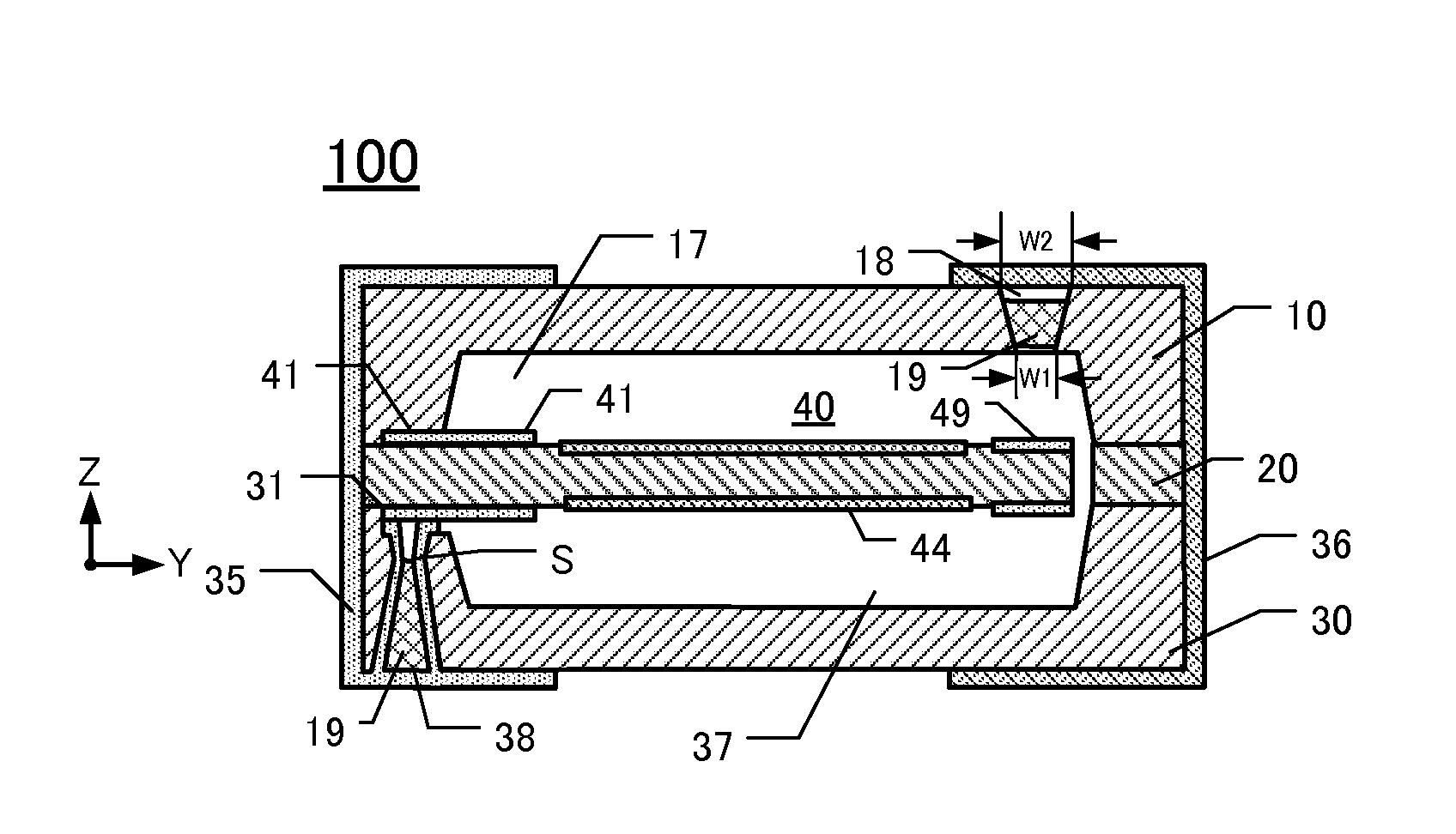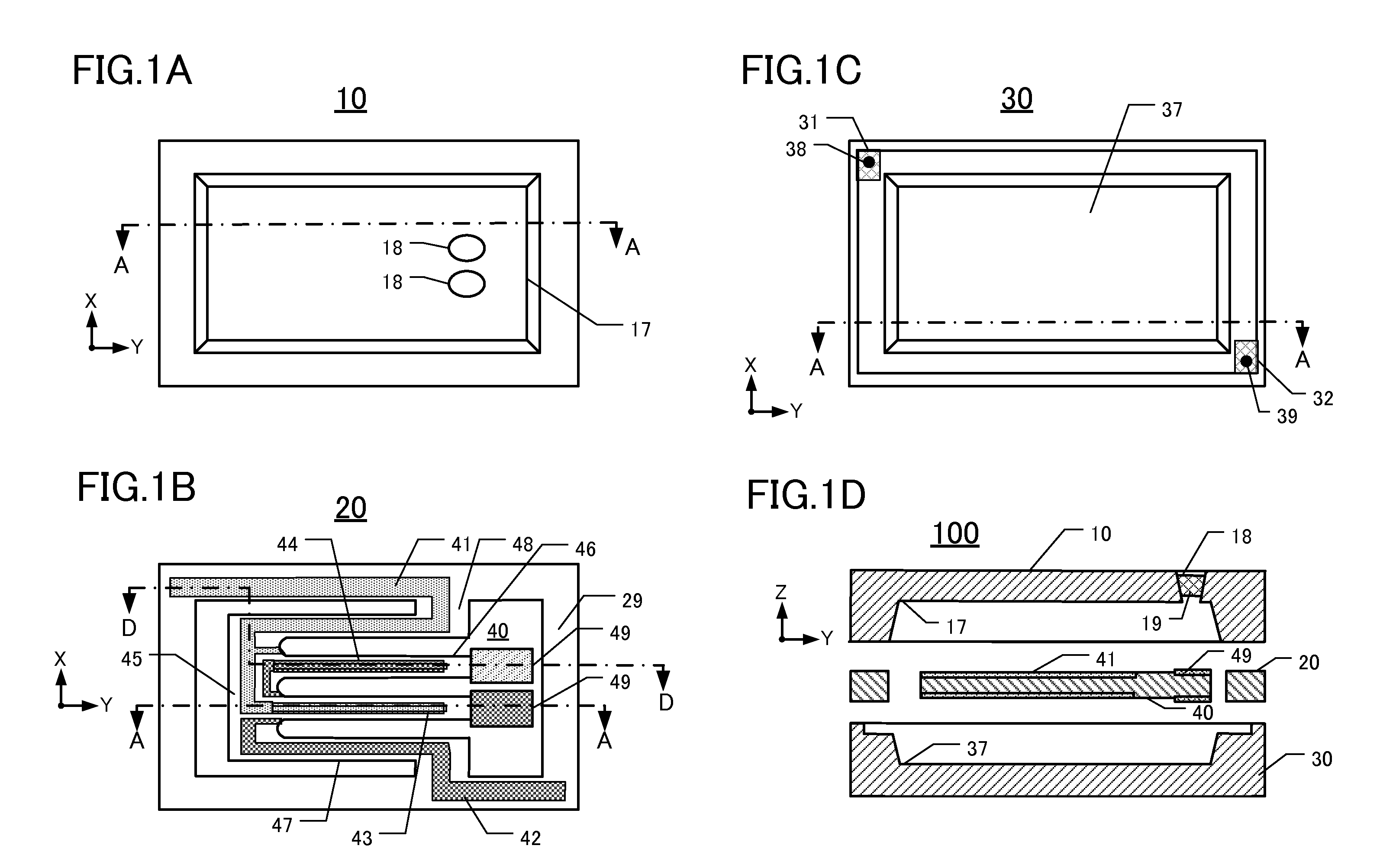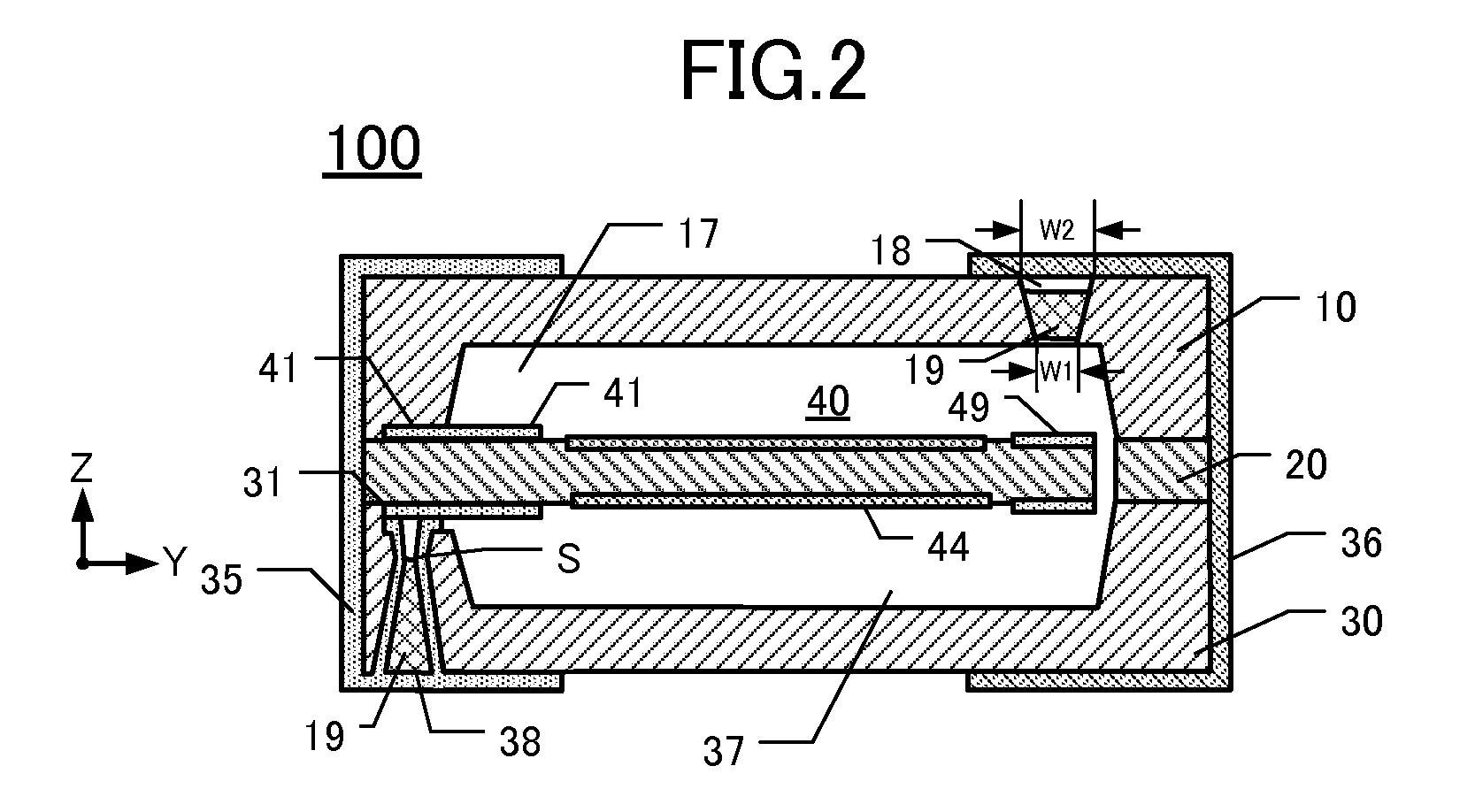Piezoelectric devices and methods for manufacturing same
a technology of piezoelectric devices and manufacturing methods, which is applied in the direction of device details, piezoelectric/electrostrictive device details, generators/motors, etc., can solve the adverse effects of remaining metal on the oscillating characteristics of the piezoelectric vibrating piece, corrode the electrodes, consume valuable manufacturing time, etc., to prevent the effect of corroding the electrode, reducing the manufacturing steps for forming frequency adjustment holes and electrode through-hol
- Summary
- Abstract
- Description
- Claims
- Application Information
AI Technical Summary
Benefits of technology
Problems solved by technology
Method used
Image
Examples
first embodiment
of Piezoelectric Vibrating Device
[0035]Relevant details of this embodiment of a piezoelectric vibrating device 100 are depicted in FIGS. 1A-1D. FIG. 1A is a plan view of the inner major surface of a lid 10 of the device 100. FIG. 1B is a plan view of the upper major surface of a “piezoelectric frame”20 including a piezoelectric vibrating piece 40. FIG. 1C is a plan view of the inner major surface of a package base 30 of the device 100. FIG. 1D is an elevational section along the line A-A of FIGS. 1A-1C. Note that the “piezoelectric vibrating device” of this embodiment comprises the piezoelectric frame 20 (including the piezoelectric vibrating piece 40) sandwiched between the lid 10 and package base 30. Thus, the lid 10, frame 20, and package base 30 collectively form a “package” enclosing the piezoelectric vibrating piece 40 in a space inside the package. To facilitate comprehension of relevant details, a first external electrode 35 and a second external electrode 36 (see FIG. 2) ar...
second embodiment
of Piezoelectric Vibrating Device
[0065]This embodiment 200 is shown in FIG. 4, which is a simplified elevational section of the subject piezoelectric vibrating device. Only the differences from the first embodiment 100 are described below. The second embodiment 200 has almost the same configuration as the first embodiment 100, except that, in the second embodiment the elevational sectional profile of the frequency-adjustment holes 18b is similar to the elevational sectional profile of the electrode through-hole 38. I.e., the diameter of the frequency-adjustment hole 18b progressively narrows with increased depth from both major surfaces. The progressions change at the connecting point H.
[0066]As the frequency-adjustment holes 18b are being formed, a first portion of each hole formed by machine processing (e.g., sand-blasting) from the outer major surface of the lid 10 into the thickness dimension of the lid. Machining is stopped at the connecting point H to avoid having the machined...
PUM
| Property | Measurement | Unit |
|---|---|---|
| Thickness | aaaaa | aaaaa |
| Electrical conductivity | aaaaa | aaaaa |
| Diameter | aaaaa | aaaaa |
Abstract
Description
Claims
Application Information
 Login to View More
Login to View More - R&D
- Intellectual Property
- Life Sciences
- Materials
- Tech Scout
- Unparalleled Data Quality
- Higher Quality Content
- 60% Fewer Hallucinations
Browse by: Latest US Patents, China's latest patents, Technical Efficacy Thesaurus, Application Domain, Technology Topic, Popular Technical Reports.
© 2025 PatSnap. All rights reserved.Legal|Privacy policy|Modern Slavery Act Transparency Statement|Sitemap|About US| Contact US: help@patsnap.com



